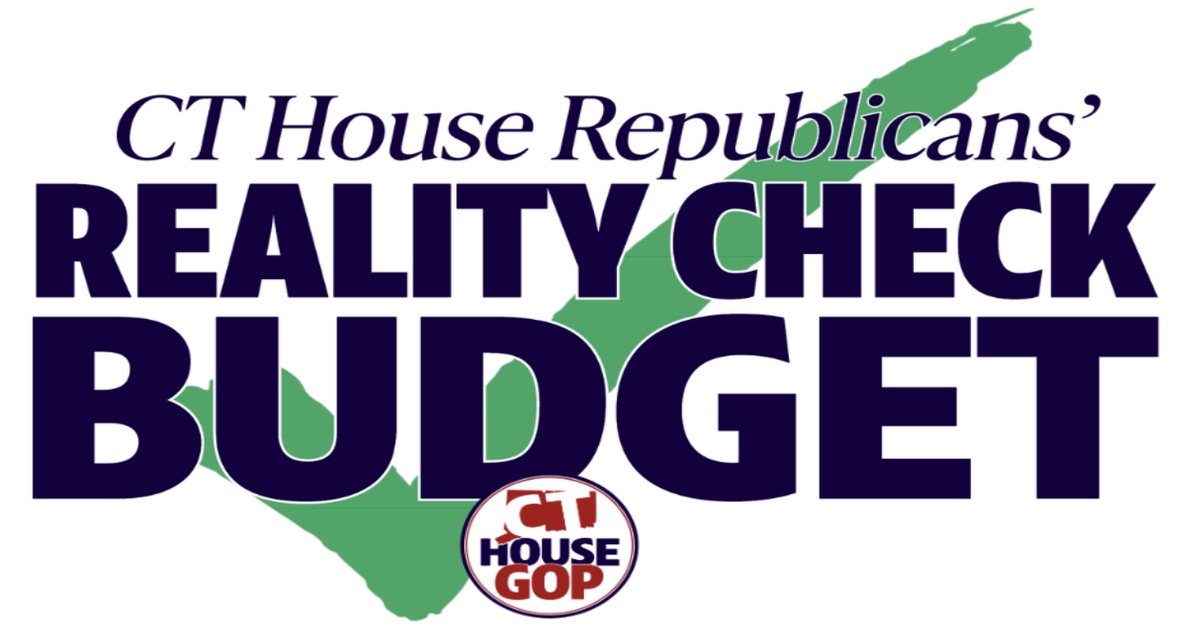As Connecticut faces another contentious budget season, House Republicans have introduced an alternative spending and revenue plan that offers a sharp contrast to the proposals advanced by Gov. Ned Lamont and legislative Democrats.
Dubbed the “Reality Check Budget,” the Republican proposal prioritizes fiscal responsibility, transparency, and taxpayer relief, while maintaining the state’s fiscal guardrails and constitutional spending cap.
While the governor’s plan exceeds the spending cap by at least $215 million, the Republican budget stays well within the limits, coming in $44 million under the cap in fiscal year (FY) 2026 and more than $850 million under in 2027, totaling nearly $900 million in savings.
In recent years, the General Assembly has justified excessive spending by creating off-budget accounts designed to sidestep the constitutional spending cap. This budget proves that it’s still possible to fund core services without resorting to those kinds of workarounds or adjusting the guardrails.
“This budget is under all of the caps. We do not break any of them,” said Rep. Tammy Nuccio (R-Tolland) during Thursday’s (May 1) press conference. “In the first year, we are under the spending cap by over $44 million and in the second year, we’re under the spending cap by $858 million.”
House Minority Leader Vincent Candelora (R-North Branford) emphasized that the proposal stays “within all of the guardrails,” adding, “It maintains important services like special education and education funding for our districts. It also protects our health care and addresses the Medicaid crisis that we have in the state of Connecticut by raising rates. It provides money to our nonprofits in order to sustain them.”
The proposal includes a two-year freeze on state employee wage increases, saving more than $330 million. “We think 33% raises over the last five years is plenty, and it’s excessive, and it’s about time we prioritize the residents of Connecticut and not our state workers,” Rep. Candelora said.
The plan also removes automatic legislative pay hikes, saving nearly $1 million over the biennium. In addition, the budget eliminates scheduled salary increases for constitutional officers, including the governor, lieutenant governor, attorney general, secretary of the state, treasurer, and comptroller.
The House GOP budget also eliminates a portion of the wildly unpopular Public Benefits Charge (PBC) — a fee on United Illuminating and Eversource energy bills that has become a growing source of frustration for ratepayers.
Connecticut residents currently pay over $1 billion annually through this surcharge to fund a mix of government mandates — from renewable energy programs to low-income assistance and utility hardship relief. The Republican plan transfers $170 million of these charges into the General Fund, with a portion also allocated through bonding for electric vehicle chargers.
“Electric bills are too damn high,” said Rep. Joe Polletta (R-Watertown). “This budget seeks to reduce the public benefits charge by shifting a lot of that unnecessary hidden tax … over to the General Fund, where we as legislators can debate, legislate, and then pay for it appropriately.”
Rep. Nuccio added that the reduction amounts to “about 25% of the public benefit fee.”
For the average household, this could mean a reduction of $10 to $40 per month on electric bills depending on usage. Rep. Candelora specifically noted that for commercial industries, which paid $500 million in PBC last year, the savings would be even more significant.
The proposal also introduces a $250 annual registration fee for electric vehicles (EV), following New Jersey’s lead, to ensure that EV drivers help fund the state’s transportation infrastructure even though they don’t pay gas taxes.
At the same time, it adopts the governor’s policy of increasing rail fares 5% annually and raising bus fares by 25 cents in FY27 to help phase out pandemic-era subsidies.
In addition, the Republican budget removes certain occupational license fees and renewals as proposed by the governor along with eliminating the Passport to Parks Fund, moving all state park funding into the General Fund, while canceling the $8 annual registration in FY 27
On healthcare, the Republican plan allocates $370 million over two years to fully fund active and retired state employee health benefits at levels recommended by Comptroller Sean Scanlon — an obligation that was underfunded in the other proposals.
It also supports struggling providers by investing $137.5 million in Medicaid rate increases over the biennium and saves $45 million by eliminating GLP-1 prescriptions for weight loss-only use.
Another high-cost item the budget addresses is the state’s growing healthcare spending for undocumented residents. The GOP plan removes all funding for non-emergency coverage, reducing costs by $116.3 million over two years. Supporters say this change restores fiscal discipline while preserving emergency services as required by law. “We’re taking that money and we’re funding Medicaid rate increases,” Rep. Nuccio said.
Additionally, the plan reduces operating expenses across all state agencies by 5%, saving $67 million over two years. All deputy commissioners are cut, except for one per agency, saving $7.2 million. It also removes one of the 14 state holidays currently provided to state workers, generating an additional $2 million in annual savings.
Programs with broad public support see renewed investment under the plan. It funds Local Food in Local Schools, expands domestic violence outreach, and restores cold-weather shelter funding. The plan also increases payments to nonprofit community service providers by 3% annually, going beyond the governor’s recommended level.
Instead of continuing the Baby Bonds program, $380 million in unused funds would be redirected to an early childhood investment account created in prior legislation. While honoring commitments to children already enrolled, the plan shifts future funding to private providers focused on delivering immediate interventions for disconnected and at-risk youth.
Other investments include restoring cuts to key tourism marketing accounts, expanding the State Police CRISIS program to support behavioral health responses by law enforcement, funding the Bridgeport election monitor and voter integrity efforts, and expanding the Katie Beckett Waiver to help children with physical disabilities access Medicaid services more quickly.
As for education, the budget funds the Excess Cost Grant for special education at tiered levels, supports dual-credit programs for high school students, and re-establishes the Office of Dyslexia within the Department of Education. It also offsets the governor’s proposed removal of “hold harmless” provisions for overfunded districts, preventing cuts to local education aid.
Finally, the plan sets aside $2 million for a legal challenge to New York’s “convenience tax” on Connecticut residents working remotely. If successful, the state could recover up to $320 million annually.
“We’re giving that option to the general public: if we could get the $320 million back online, what tax relief would you like to see?” Rep. Candelora said. The plan includes a website, RealityCheckCT.com, where residents can weigh in on potential uses for that revenue.
Rep. Candelora was quick to point out that this potential savings is “not relied upon in our budget proposal, so we are balanced without it.”
By avoiding new entitlements, delaying unsustainable expansions, and refusing to weaken the state’s fiscal guardrails, the Republican proposal presents a serious and credible alternative to the current budget path. “There are no gimmicks in this budget,” said Rep. Polletta. “Most importantly, it keeps our fiscal guardrails intact.”
The Republican budget spends $769.69 million less than the governor’s proposal and $1.285 billion less than the legislative Democrats’ proposal. The largest savings occur in FY27, where the GOP plan comes in $1.069 billion below the spending level set by the Democrats. It also does not include any broad-based tax increases.
Like the other two proposals, the Republican budget taps into the FY 2025 surplus —currently projected by Comptroller Scanlon to be $461.6 million in the General Fund and $146.6 million in the Special Transportation Fund, according to his May 1 report. But unlike the governor and legislative Democrats, the GOP budget uses that money as true one-time revenue — not to launch new and permanent programs.
Whether the legislature ultimately adopts any of these reforms remains to be seen. But the proposal offers a disciplined, comprehensive roadmap for building a more stable fiscal future — one that doesn’t rely on dismantling the fiscal guardrails or raising taxes.

